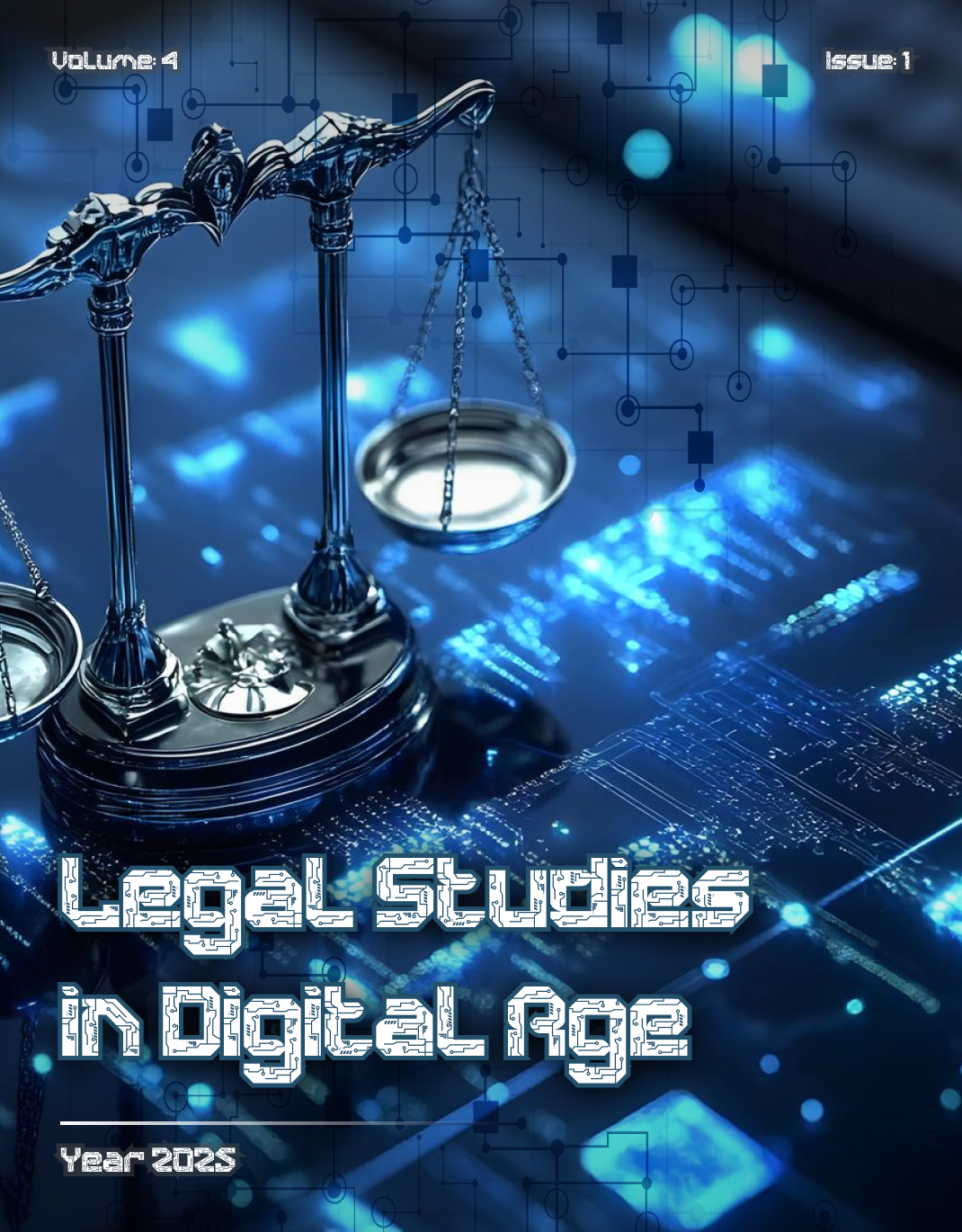Monitoring Government Actions and Decisions Through Emerging Media, Cyberspace, and Public Opinion
Keywords:
Government actions, Public opinion, Emerging media, Cyberspace, OversightAbstract
In the contemporary era, due to increasing social complexity, the expanding role of modern mass media and cyberspace in shaping public opinion across cultural, economic, and political domains has become more significant than ever. At no point in human history has society been as politically engaged as it is today. It is likely that one of the principal causes of this politicization is the widespread development of mass communication tools. The present study was conducted using a qualitative research method and employed a library-based approach. This research seeks to examine and delve into existing sources and findings to understand the extent to which public opinion, emerging media, and cyberspace can be effective in monitoring and controlling governmental actions. A careful and critical review of the thoughts of experts in political science, law, and social sciences suggests a consensus among scholars that the Internet, media, particularly new forms of media and cyberspace, have had a profound influence on public opinion—guiding its direction, instigating both structural and partial reforms in societies, overseeing the actions of governing authorities, and influencing or altering the behavior of governmental institutions. Moreover, an analysis of relevant case studies from different societies supports this view. Given the influential power of social media in shaping public opinion, the need to establish effective mechanisms for the optimal use of these tools to strengthen democracy and promote human rights is increasingly felt.
References
Aghili, V., & Ziaei Pour, H. (2009). Examining the Penetration of Virtual Social Networks Among Iranian Users. Mass Communication Quarterly, 20(4).
Alam, A. (2013). Foundations of Political Science. Ney Publishing.
Alvani, M., & Danaeefard, H. (2001). Public Administration and Public Trust. Management Knowledge Quarterly(55), 5-27.
Ameli, S. (2009). Virtual Research. Cultural and Social Studies Research Institute, Ministry of Science.
Amidzanjani, A., & Mousazadeh, E. (2010). Oversight of Government Actions and Administrative Justice. Tehran University Press.
Araqi, M. (2004). Importance and Functions; Examining and Understanding Public Opinion. Fajr Publishing.
Bashiri, S. (2016). The Impact of Virtual Space on Political Development; Emphasizing Social Networks. Media Management Journal(21).
Bennett, W., & Hess, K. M. (2004). Management and supervision in law enforcement. Wadsworth/.Thomson Learning.
Binzethbolt, S., & Robert, k. (2005). Responsive Government? and Government Policy. Political Studies, 53. https://doi.org/10.1111/j.1467-9248.2005.00534.x
Chadwick, A. (2013). The Hybrid Media System: Politics and Power. Oxford University Press. https://doi.org/10.1093/acprof:oso/9780199759477.001.0001
Dadgaran, M. (2003). Public Opinion and Its Measurement Criteria. Morvarid Publishing.
Dahlgren. (2001). Television and the Public Sphere. Soroush Publishing.
Dehkhoda, A. A. (2006). Dehkhoda Dictionary. Tehran University Press.
Fraser, N. (1990). Rethinking the Public Sphere: A Contribution to the Critique of Actually Existing Democracy. Social Text(25/26), 56-80. https://doi.org/10.2307/466240
Gerbaudo, P. (2012). Tweets and the Streets: Social Media and Contemporary Activism. Pluto Press.
Ghazi, A. (2004). Essentials of Constitutional Law. Mizan Publishing.
Gitlin, T. (1980). The whole world is watching: Mass media in the making & unmaking of the new left. University of California Press.
Hofmann, J. (2019). Mediated democracy - Linking digital technology to political agency. Internet Policy Review, 8(2). https://doi.org/10.14763/2019.2.1416
Kamerani, A. (2000). Public Oversight and Its Relationship with Public Freedoms.
Khaki, G. (2013). Research Methods with an Approach to Thesis Writing. Baztab Publishing.
Kleis Nielsen, R., & Fletcher, R. (2020). Democratic Creative Destruction? The Effect of a Changing Media Landscape on Democracy. Cambridge University Press. https://doi.org/10.1017/9781108890960.008
Lazar, J. (2001). Public Opinion. Ney Publishing.
Matt, R. (2011). "Transparency Is a Two-Way Street.". http://sunlightfoundation.com/blog/2011/04/20/transparency-is-a-two-way-street/
McCoy, K., & et al. (2019). Polarization and the Media: A Review of the Evidence. Journal of Communication, 69(1), 1-25.
McQuail, D. (2008). New Media - New Theory. Retrieved February 24, 2012
Metani, M., & Hassanpour, M. (2014). Examining the Role of Mass Media in Enhancing Organizational Accountability in Government Agencies. Management Quarterly, 11(34).
Mousavi Khalkhali, M. M. (2001). Sovereignty in Islam (Vol. 1). Society of Seminary Teachers of Qom, Islamic Publications Office.
O'Donnell, G. (2010). Democracia, agencia y Estado. Teoría con intención comparativa. Prometeo Libros.
Pariser, E. (2011). The Filter Bubble: What the Internet Is Hiding from You. Penguin Press. https://doi.org/10.3139/9783446431164
Parvin, K. (2023). Applied Research Methods in Humanities. Dadgostar Publishing.
Parvin, K., Aslani, F., Alhoei Nazari, H., & Yousofi, A. M. (2020). Tools of Political Oversight in the Legal System of the Islamic Republic of Iran and Their Impact on Geographic Justice in the Country. Scientific-Research Quarterly of New Perspectives in Human Geography, 12(2), 383-403.
Pattie, C., Seyd, P., & Whiteley, P. (2003). 'Civic Attitudes and Engagement in Modern Britain'. Parliamentary Affairs, 56(4), 616-633. https://doi.org/10.1093/pa/gsg106
Pourahmadi Meybodi, H., & Saeedi, R. a.-A. (2011). The Relationship Between Culture and Hegemony in the Global Arena: A Gramscian Approach. International Politics Approaches, Research Institute for Humanities and Cultural Studies(36), 143-180.
Rahmanzadeh, S. A. (2010). The Function of Virtual Social Networks in the Era of Globalization. Strategic Studies Quarterly on Public Policy, 1(1).
Rasekh, M. (2017). Oversight and Balance in Constitutional Law. Drak Publishing.
Rastegaran, N., Farzaneh, A., & Rahimi, R. (2023). The Impact of Public Opinion on Political Oversight of Government. Public Law Studies Quarterly, 53(3).
Sanei, P. (2002). Law and Society. Tarh-e No Publishing.
Sardarabadi, K. (2004). Comparative Study of the Impact of Mass Media, Modern Communication Technologies, and Interpersonal Communication on Students' Political Knowledge.
Taghavi, M., & Khoshnavis, Y. (2009). Comparison of Effective Inputs in Science and Technology Policy in Iran and Regional Countries. Technology Growth Quarterly, 6(21).
Taherian, M., Delavar, A., Rasouli, M. R., & Aghili, S. V. (2000). The Relationship Between Social Network Usage and Cognitive Intelligence, Emotional Intelligence, Creativity, and Personality Traits in Users. New Media Studies, 4(15).
Undp. (2004). La democracia en América Latina. Hacia una democracia de ciudadanos y ciudadanas. Taurus.
Downloads
Published
Submitted
Revised
Accepted
Issue
Section
License
Copyright (c) 2025 Amirali Nimaei (Author); Khairollah Parvin; Ahmad Momeni Rad (Author)

This work is licensed under a Creative Commons Attribution-NonCommercial 4.0 International License.

